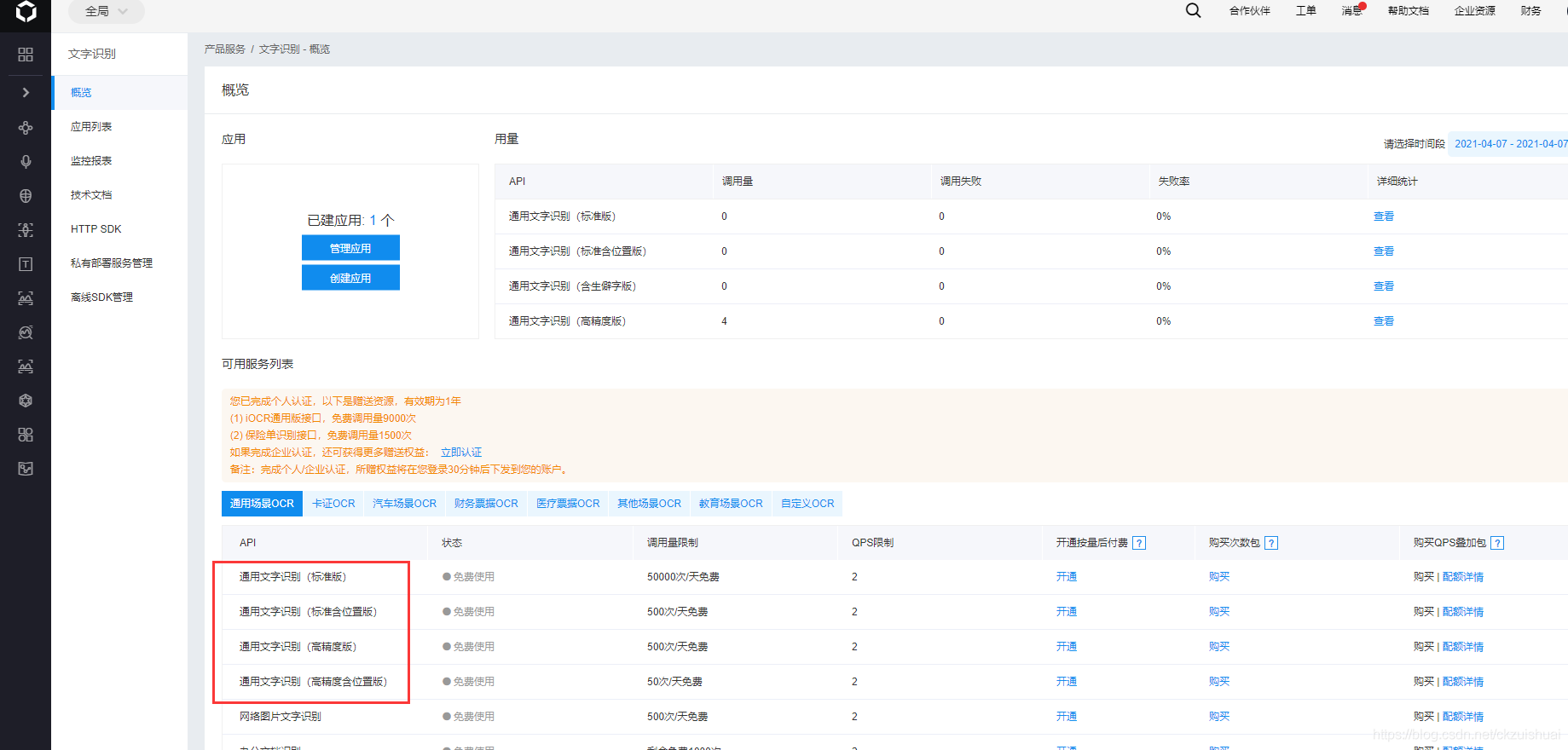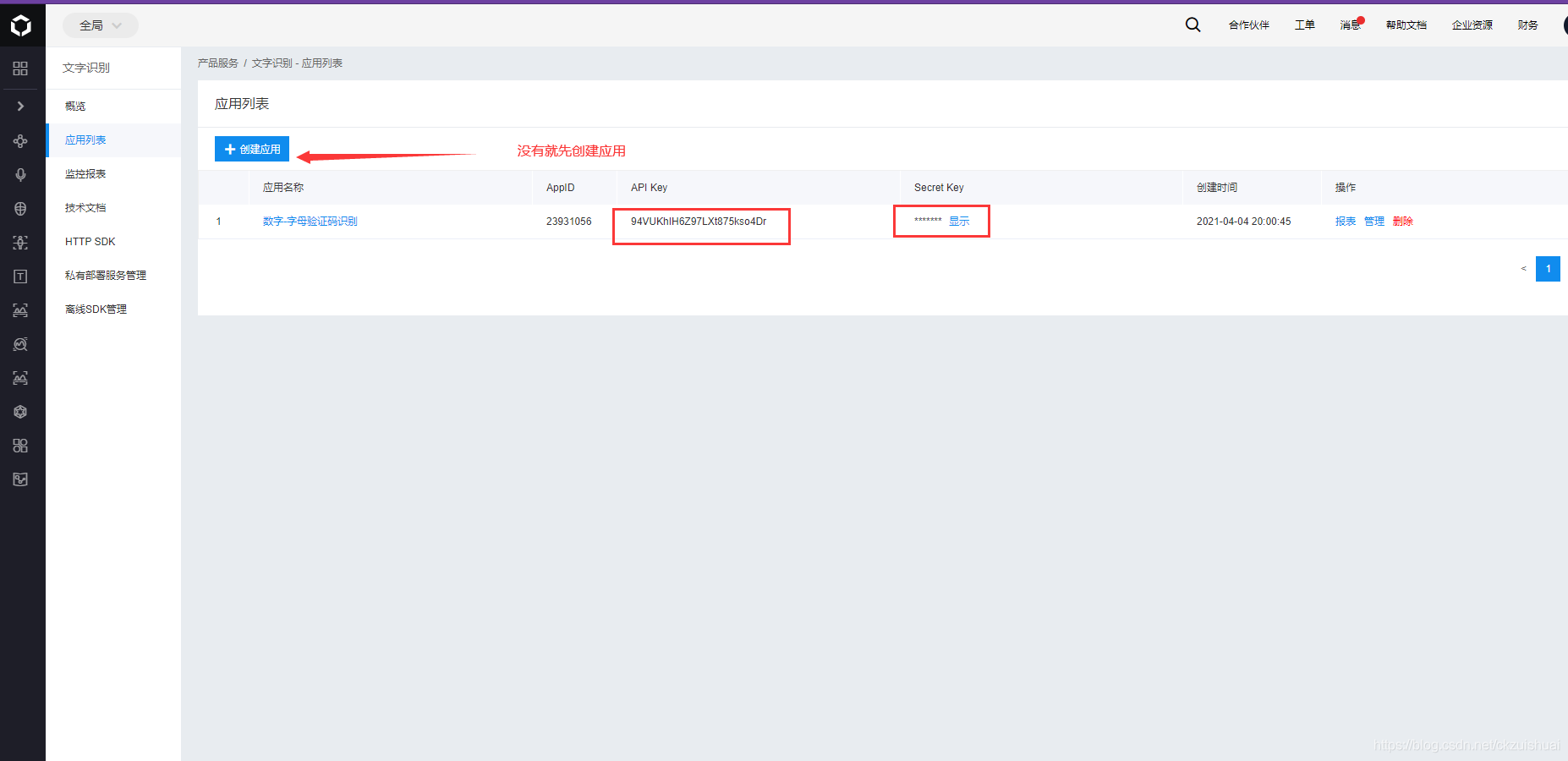python自動化調用百度api解決驗證碼
自動化測試驗證碼登陸的三種解決方式
1,找開發關閉驗證碼
2,找開發設置萬能驗證碼
3,使用第三方接口識別驗證–不能100%識別,比自己搭建的ocr識別的識別率高很多
具體講的就是第三種-調用百度雲識別驗證碼:
from selenium import webdriver
from PIL import Image
import base64
import requests
import time
def baidu_api(Verification_code, AK, SK):#Verification_code驗證碼路徑,AK,SK百度雲的身份識別碼
chrome.get_screenshot_as_file('reg.png') # 獲取登陸頁面的圖片
code_img = chrome.find_element_by_xpath(Verification_code) # 找到驗證碼圖片的位置
img = Image.open('reg.png')# 保存圖片
c_img = img.crop((code_img.location['x'], code_img.location['y'], code_img.location['x'] + code_img.size['width'],
code_img.location['y'] + code_img.size['height'])) # 截取驗證碼圖片
c_img.save('reg_code.png')
host = 'https://aip.baidubce.com/oauth/2.0/token?grant_type=client_credentials&' \
'client_id='+AK+'&' \
'client_secret='+ SK
response = requests.get(host)
token = response.json()['access_token']
request_url = "https://aip.baidubce.com/rest/2.0/ocr/v1/accurate_basic"
f = open('reg_code.png', 'rb')# 二進制方式打開圖片文件
img = base64.b64encode(f.read())
params = {"image": img}
access_token = token
request_url = request_url + "?access_token=" + access_token
headers = {'content-type': 'application/x-www-form-urlencoded'}
response = requests.post(request_url, data=params, headers=headers)
dict_a = response.json()['words_result']
if response:
dict_a = eval(str(dict_a)[1:-1])#數據類型的格式轉換
dict_a = dict(dict_a)#轉化為字典類型
dict_a = dict_a['words']
dict_a = "".join(dict_a.split()) # 使用一個空字符串合成列表內容生成新的字符串
dict_a = dict_a.lower()#把大寫字母改為小寫字母
return dict_a
else:
chrome.refresh()
chrome = webdriver.Chrome()#瀏覽器實例化
chrome.maximize_window()#最大化瀏覽器
chrome.get('自己登陸的網址')
test = baidu_api(Verification_code, AK, SK)#返回識別的驗證碼
chrome = webdriver.Chrome()
print(test)#驗證碼
百度雲AK,SK的獲取:
進入:百度雲
點擊立即使用——進行登陸——實名認證。

按著自己的需求選著,免費的基本上就夠用瞭

這就是自己的AK和SK
然後寫入在代碼裡給AK和SK就行瞭
到此這篇關於python自動化調用百度api解決驗證碼的文章就介紹到這瞭,更多相關python調用百度api驗證碼內容請搜索WalkonNet以前的文章或繼續瀏覽下面的相關文章希望大傢以後多多支持WalkonNet!
推薦閱讀:
- None Found